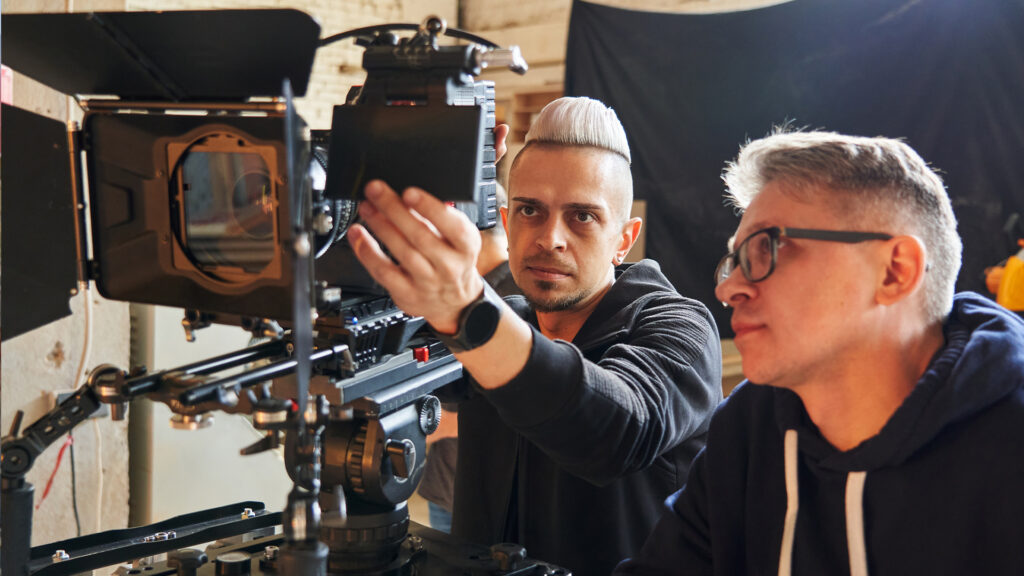Exploring Entry-Level “Below the Line” Jobs on a Film Set

Film sets are dynamic environments where numerous professionals work together to create captivating stories for the silver screen. While the spotlight often falls on the directors and actors, there is a world of opportunities for individuals seeking entry-level positions “below the line” in the film industry. Here are some of the most common entry-level jobs on a film set, shedding light on the roles and responsibilities of these invaluable professionals.
1. Production Assistant:
The production assistant (PA) is the backbone of the film set, responsible for various tasks on and off the set. PAs assist with general duties both on set and in the production office, run errands, set up production equipment, and help with crowd control. This role provides a valuable learning experience and serves as a stepping stone to other positions in the industry. PAs gain hands-on experience and establish connections with professionals in different departments, making it an excellent starting point for aspiring filmmakers.
2. Grip:
The grip department is responsible for setting up and maintaining the equipment. Entry-level positions in the grip department involve assisting the key grip and best boy grip and may report to the gaffer. Duties may include lifting, carrying, and setting up equipment, as well as helping with rigging and ensuring the safety of the crew. Being a grip assistant offers an opportunity to learn techniques to gain practical experience in the technical aspects of filmmaking.
3. Set Dresser Assistants:
Set dressers are responsible for arranging and decorating the sets to create a specific atmosphere or setting. Entry-level set dressers, also known as set dressing assistants, work under the supervision of the lead set dresser. They assist with assembling and arranging props, furniture, and other set decorations, ensuring that everything is in place for each scene. Set dressing assistants get hands-on experience in set design and gain insights into the creative process of bringing a script to life through visual elements. Key skills for brand new set dressing assistants is good physical health and keen attention to detail.
4. Wardrobe Assistant:
Wardrobe assistants support the costume department by assisting the costume designer, wardrobe supervisor, and other key members. Their responsibilities include organizing costumes, helping with fittings, and maintaining the integrity of costumes during production. Wardrobe assistants may also assist with laundry, alterations, and inventory management. This role provides valuable exposure to the creative aspects of costuming and the practical challenges of outfitting actors. Wardrobe assistants gain knowledge about period-specific clothing, styling, and the importance of maintaining accurate continuity throughout a film.
5. Camera Assistant:
Entry-level camera assistant positions, also known as camera trainees or sometimes even a second assistant, serve as a crucial support role in the camera department. They assist the camera operator and focus puller, helping with camera setup, lens changes, and maintaining camera equipment. Camera assistants also learn about shot composition, camera movement, and the technical aspects of cinematography. This role offers a unique opportunity to gain hands-on experience with professional camera equipment and learn from experienced professionals in the field.
6. Sound Assistant:
Sound assistants work closely with the sound department, supporting sound mixers, boom operators, and other key members. They assist with setting up microphones, observe monitoring audio levels, and assist in ensuring sound quality during production. Sound assistants also contribute to location sound recording and help with post-production tasks as directed by the sound mixer. This entry-level position allows individuals to learn about sound recording techniques, equipment, and the important role sound plays in storytelling. It also provides valuable insights into the collaborative nature of sound design and its integration with other elements of the filmmaking process.
Entry-level “below the line” jobs on a film set offer invaluable opportunities for aspiring filmmakers to gain hands-on experience, learn from industry professionals, and establish connections in the field. From production assistants to camera assistants, each role contributes to the collaborative effort required to bring stories to life on the big screen. These entry-level positions provide a solid foundation for growth and advancement within the film industry. Whether it’s learning about the technical aspects of lighting and camera operation or gaining insights into the creative process of set design and costuming, these roles serve as stepping stones towards fulfilling careers in filmmaking.




